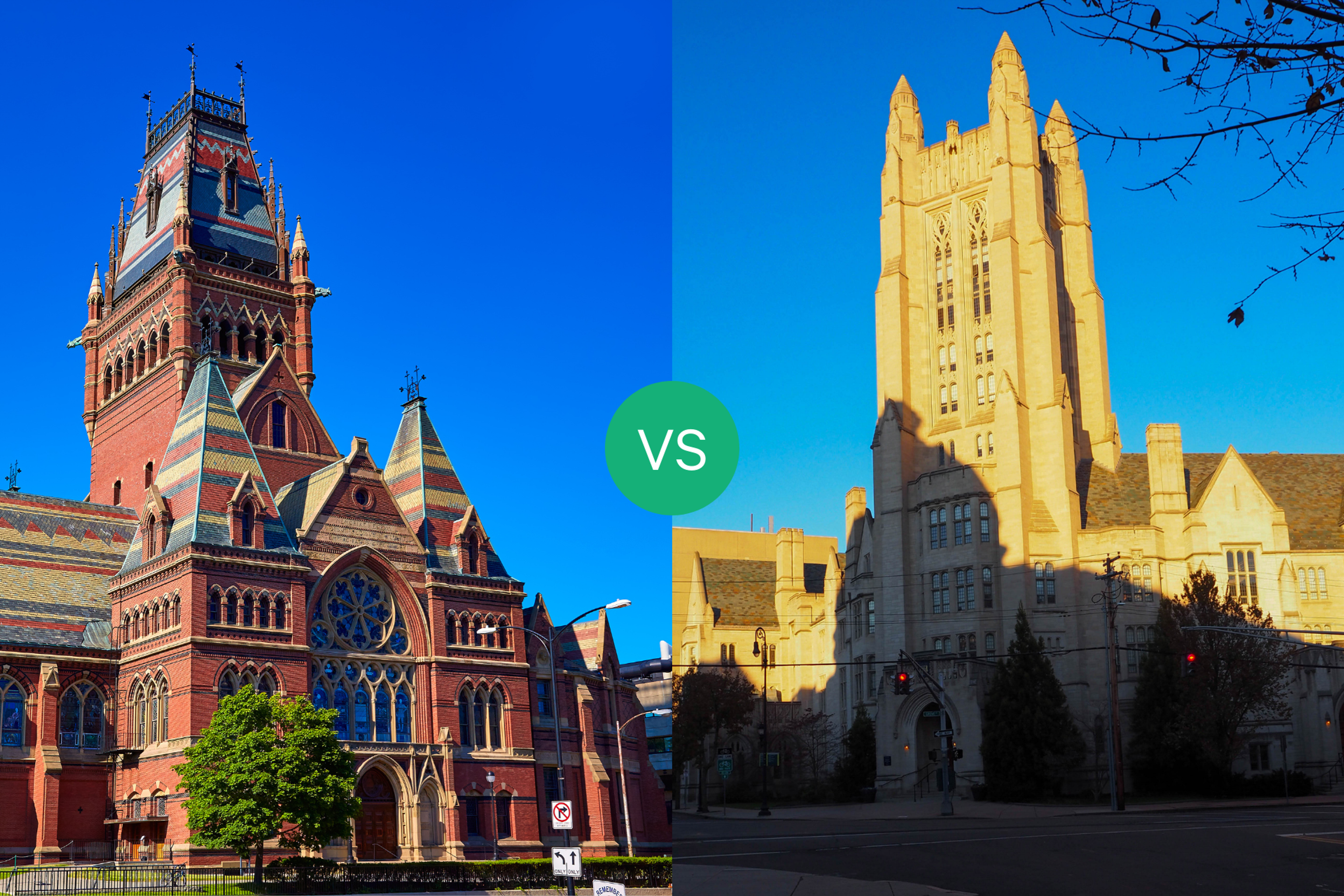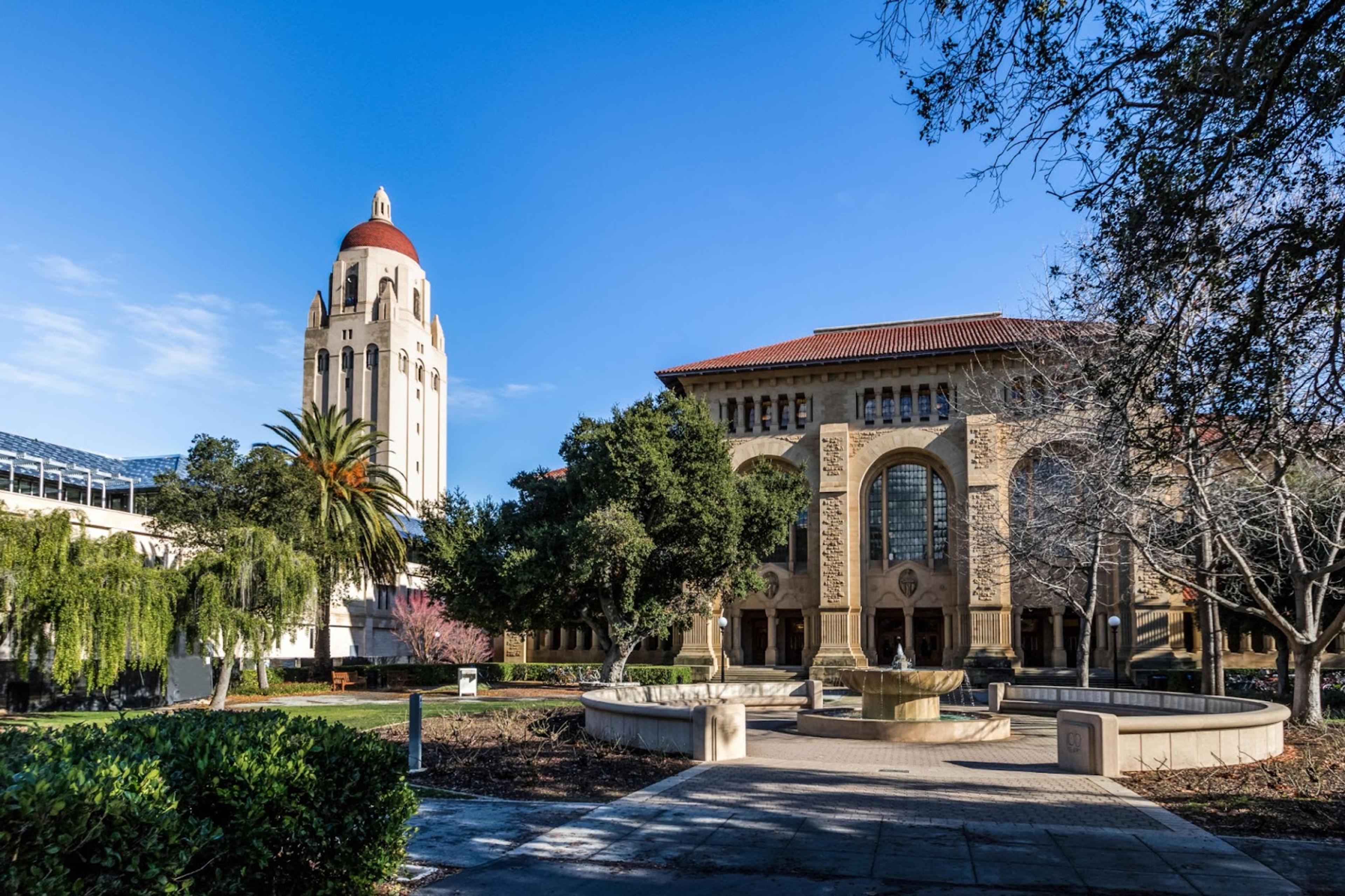Stanford Law School Vs. Yale Law School: An In-Depth Comparison
Are you considering attending law school but can't decide between Stanford and Yale? Look no further! Our in-depth comparison of these two prestigious law schools will provide you with all the information you need to make an informed decision.
Posted June 17, 2025

Table of Contents
Free Event

Featuring Indrani S.
How To Write Outstanding Law School Application Essays
Starting Monday, June 23
11:30 PM UTC · 60 minutes

Featuring Indrani S.
If you're considering pursuing a career in law, you've likely heard of two of the most prestigious law schools in the United States: Stanford Law School and Yale Law School. These institutions are known for their rigorous academic programs, accomplished faculty members, and renowned alumni. But how do these two schools compare? In this in-depth article, we will explore the key similarities and differences between Stanford Law School and Yale Law School.
Introduction to Stanford Law School and Yale Law School
Stanford Law School and Yale Law School are both highly regarded institutions that offer a renowned juris doctor (JD) program. Stanford Law School is located in Palo Alto, California, and is part of Stanford University. Yale Law School, on the other hand, is located in New Haven, Connecticut, and is part of Yale University.
Both law schools have a rich history and have produced many notable alumni. Stanford Law School was founded in 1893 and has since become known for its focus on technology and intellectual property law. Yale Law School, founded in 1824, has a strong reputation for its public interest law program and has produced many prominent politicians and judges.
History and Background of Stanford Law School
Stanford Law School was established in 1893 and has since then grown to become one of the top law schools in the country. The school has a strong focus on interdisciplinary education and offers joint degree programs with other schools within Stanford University, including business, medicine, and education. Stanford Law School also launched the nation's first clinical legal education program in 1973, allowing students to gain hands-on experience while working on real legal cases.
Additionally, Stanford Law School is known for its commitment to public service and social justice. The school offers a variety of pro bono opportunities for students to work on cases that serve the public interest, and has a dedicated public interest center that provides resources and support for students pursuing careers in public service. Stanford Law School also hosts a number of events and conferences focused on social justice issues, bringing together scholars, practitioners, and activists to discuss and address pressing legal and social issues.
History and Background of Yale Law School
Yale Law School was founded in 1824 and is considered one of the oldest law schools in the country. It has a long-standing reputation for excellence in legal scholarship and produces many successful lawyers, judges, and policymakers. Yale Law School is also known for its public interest law program, which encourages students to use their legal skills to serve the public interest and advance social justice.
Over the years, Yale Law School has been home to many influential legal scholars and practitioners. Some of the notable alumni include former US President Bill Clinton, Supreme Court Justices Sonia Sotomayor and Samuel Alito, and former Secretary of State Hillary Clinton. The school has also produced many prominent legal academics, such as Robert Post, Akhil Amar, and Bruce Ackerman.
In addition to its academic programs, Yale Law School offers a wide range of extracurricular activities and student organizations. These include moot court competitions, legal clinics, and student-run journals. The school also hosts numerous conferences and lectures throughout the year, featuring prominent legal scholars and practitioners from around the world.
Accreditation and Rankings of Stanford Law School and Yale Law School
Both Stanford Law School and Yale Law School are highly accredited and ranked institutions. Stanford Law School is accredited by the American Bar Association (ABA) and is consistently ranked in the top five law schools by U.S. News & World Report. Yale Law School is also accredited by the ABA and frequently earns the number one ranking in the same publication.
In addition to their high rankings and accreditation, both Stanford Law School and Yale Law School have produced numerous notable alumni. Stanford Law School has produced Supreme Court Justices Sandra Day O'Connor and Anthony Kennedy, as well as former Secretary of State and National Security Advisor Condoleezza Rice. Yale Law School has also produced several Supreme Court Justices, including Sonia Sotomayor and Samuel Alito, as well as former Presidents Bill Clinton and Gerald Ford.
Campus Facilities and Infrastructure at Stanford Law School and Yale Law School
Both law schools offer excellent facilities and resources for their students. Stanford Law School boasts cutting-edge technology and facilities, including the Crown Quadrangle, a centerpiece of the law school's campus which features state-of-the-art classrooms and common areas. Yale Law School also has impressive facilities, including a recently renovated library and an extensive collection of legal materials.
In addition to their impressive facilities, both law schools also offer a variety of extracurricular activities and organizations for students to get involved in. At Stanford Law School, students can participate in the Stanford Law Review, the Stanford Journal of Law, Business & Finance, and the Stanford Technology Law Review, among others. Yale Law School offers similar opportunities, with student-run organizations such as the Yale Law Journal, the Yale Journal of International Law, and the Yale Journal on Regulation.
Furthermore, both law schools prioritize sustainability and environmental responsibility. Stanford Law School has implemented a number of green initiatives, including a solar panel installation and a composting program. Yale Law School has also taken steps towards sustainability, with a focus on reducing waste and promoting energy efficiency throughout the campus.
Faculty Profiles at Stanford Law School and Yale Law School
The faculty members at both schools are highly accomplished and respected in their respective fields. Stanford Law School employs approximately 55 full-time faculty members and 90 adjunct professors who are scholars, practitioners, and policymakers. Yale Law School has around 70 full-time faculty members, many of whom are leading experts in their fields with extensive experience in legal practice and policy.
Stanford Law School has a strong focus on interdisciplinary research and collaboration, with faculty members often working with colleagues in other departments and schools at Stanford University. This approach allows for a diverse range of perspectives and expertise to be brought to legal issues and challenges.
Yale Law School is known for its commitment to public service and social justice, with many faculty members actively involved in advocacy and policy work outside of the classroom. The school also offers a number of clinics and programs that provide students with hands-on experience in public interest law and advocacy.
Curriculum and Course Offerings at Stanford Law School and Yale Law School
Both law schools offer a robust and challenging curriculum, with a wide range of courses available to students. Stanford Law School requires students to take core courses in areas such as civil procedure, contracts, and criminal law, but also offers a variety of elective courses in areas such as intellectual property, international law, and environmental law. Similarly, Yale Law School requires students to take foundational courses, but also provides opportunities for them to work closely with faculty members and pursue specialized areas of interest.
In addition to their core and elective courses, both Stanford Law School and Yale Law School offer a variety of clinics and experiential learning opportunities for students. At Stanford, students can participate in clinics focused on areas such as environmental law, human rights, and intellectual property. Yale offers clinics in areas such as immigration law, criminal justice, and veterans legal services. These clinics provide students with hands-on experience working on real cases and projects, under the guidance of experienced faculty members and practitioners.
Admissions Criteria at Stanford Law School and Yale Law School
Admission to both law schools is highly competitive. Stanford Law School has an acceptance rate of approximately 8 percent, while Yale Law School's acceptance rate is even lower, at around 6 percent. Both schools consider a range of factors when reviewing applications, including undergraduate academic performance, LSAT scores, and extracurricular activities.
Tuition Fees, Financial Aid, Scholarships, and Grants at Stanford Law School and Yale Law School
Attending either law school can be expensive, with annual tuition fees and expenses amounting to tens of thousands of dollars. However, both schools offer financial aid, scholarships, and grants to help offset the costs. Stanford Law School offers need-based aid, as well as a range of scholarships based on academic merit or specific criteria. Yale Law School is committed to providing financial assistance to students who would otherwise be unable to attend, and offers a range of grants, scholarships, and loans.
Student Life Experience at Stanford Law School vs. Yale Law School
Both law schools offer a rich and dynamic student life experience. Stanford Law School hosts a range of student organizations, including those focused on community service, environmental law, and entertainment law. It also has a thriving moot court program and encourages students to participate in clinics and externships. Yale Law School is similarly active, with around 50 student organizations and many opportunities for students to engage in public service work. It also has a vibrant moot court program and a range of clinical opportunities.
Career Prospects after Graduating from Stanford Law School vs. Yale Law School
Graduating from either law school can open up many lucrative and rewarding career opportunities. According to U.S. News & World Report, graduates from Stanford Law School have a median starting salary of $180,000, while graduates from Yale Law School have a median starting salary of $190,000. Both schools have impressive career placement rates, with many graduates going on to work for top law firms, government agencies, and non-profit organizations.
Notable Alumni from Stanford Law School vs. Yale Law School
Both law schools have produced many distinguished alumni who have gone on to make significant contributions to the legal profession. Some notable alumni from Stanford Law School include former Secretary of State Condoleezza Rice, Supreme Court Justice Anthony Kennedy, and civil rights attorney Bryan Stevenson. Some notable alumni from Yale Law School include former President Bill Clinton, civil rights activist Marian Wright Edelman, and Supreme Court Justice Sonia Sotomayor.
Conclusion: Which is the Better Choice, Stanford or Yale?
There is no easy answer to this question, as both law schools offer exceptional academic programs and opportunities for their students. The decision ultimately depends on your personal preferences, career goals, and abilities. Regardless of your choice, attending either Stanford Law School or Yale Law School is sure to be a challenging and rewarding experience.
Additional Resources for Prospective Students: Online Communities, Social Media Groups, etc.
If you're considering applying to Stanford Law School or Yale Law School, there are many online resources available to help you make an informed decision. Some useful websites include the schools' official websites, online forums such as Top Law Schools, and social media groups such as the Stanford Law School Facebook page or Yale Law Women. Additionally, you can reach out to current or former students for advice and guidance.
In conclusion, both Stanford Law School and Yale Law School are world-class institutions that offer exceptional legal education and opportunities to their students. By exploring the similarities and differences between these two schools, you can make an informed decision about which one is the right fit for you.











